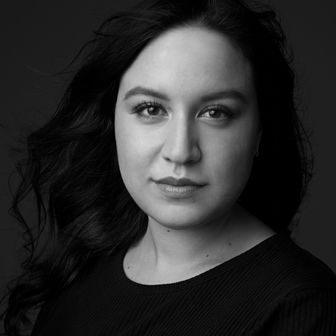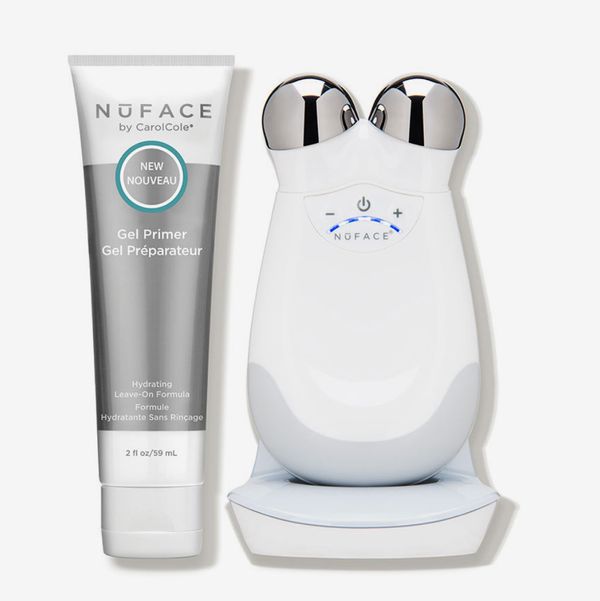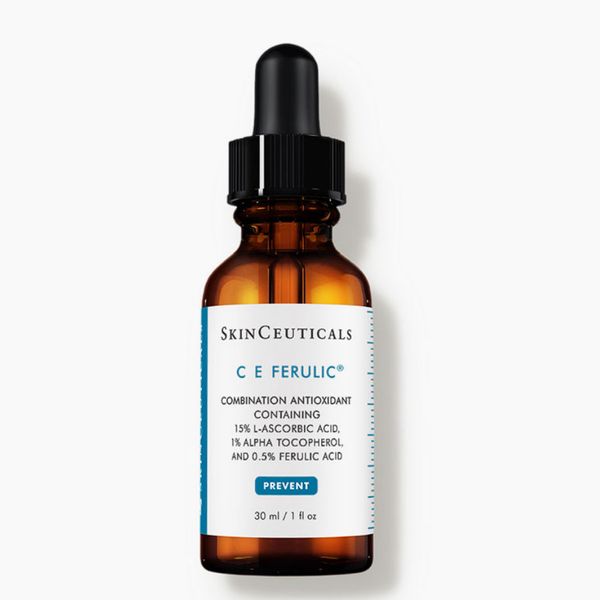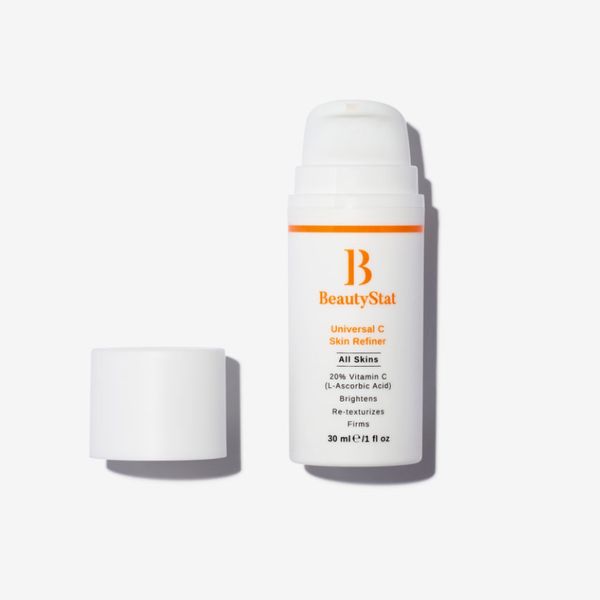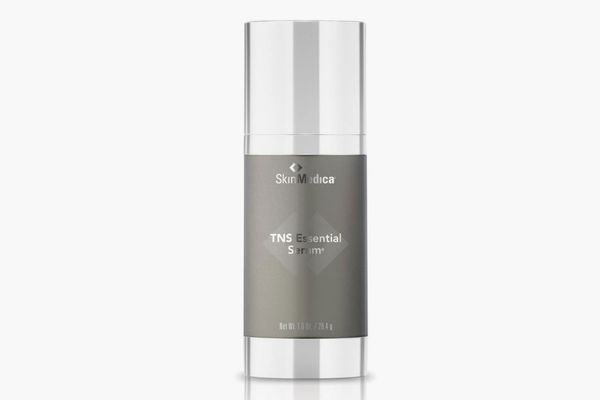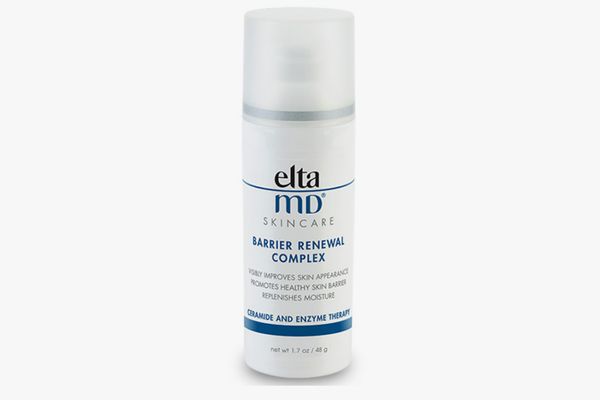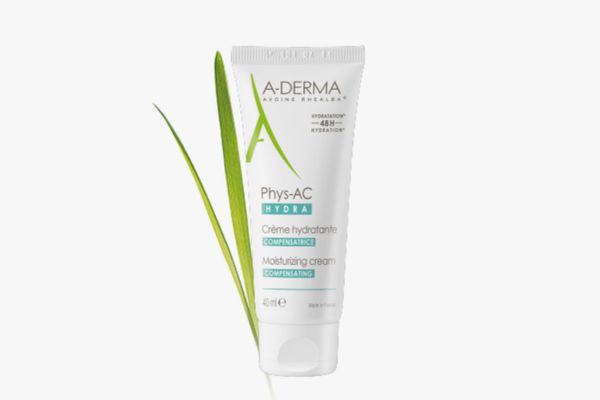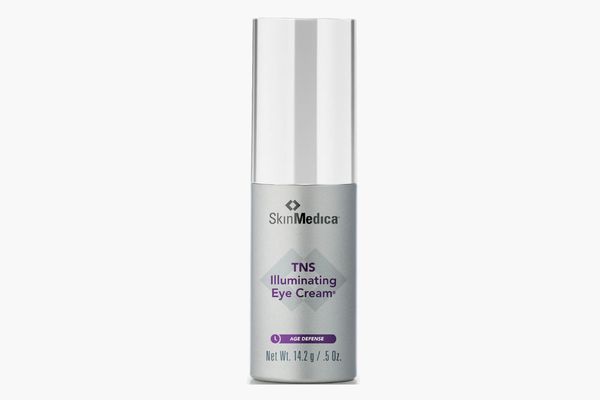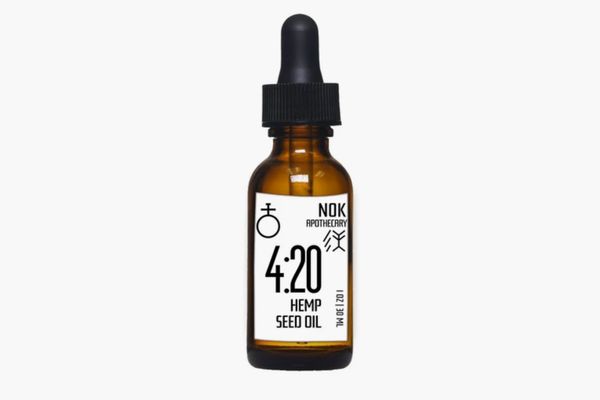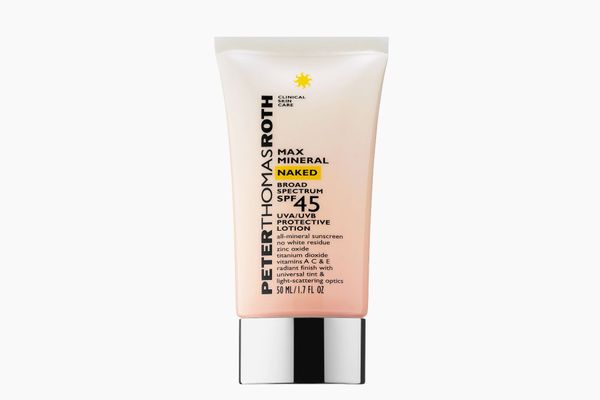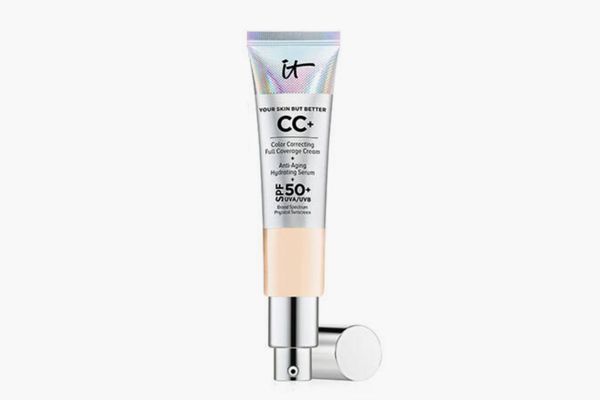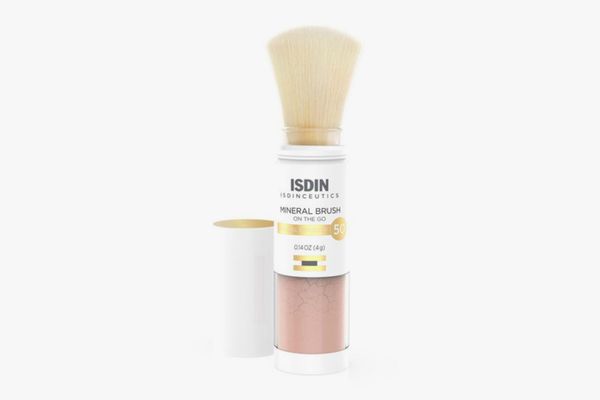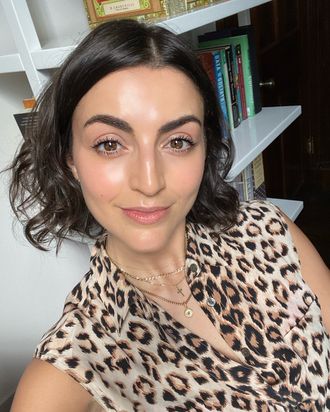
If you want to improve your skin-care routine, start by watching Charlotte Palermino’s Instagram Stories. Palermino is the co-founder of Nice Paper, a weekly newsletter about cannabis, and next February she’ll be launching a skin-care line called Dieux. Both ventures are driven by her interest in evidence-based research and clinical trials, a topic she gets into on Instagram too.
Basically, she just wants to know what’s been proven to work. “There’s a misconception that things in a lab are ‘harsh,’ and that ‘clean beauty’ is good for all skin,” she explains. “While there are plenty of terrible synthetic ingredients one should avoid, the same can be said for what’s found in nature. I’m not out here waiting on a lemon crop to get my vitamin C. L-ascorbic developed in a lab will do just fine (and is cleaner, in my opinion, because you don’t have to deal with farming issues.)”
Palermino has rosacea and perioral dermatitis, so her skin is particularly reactive. She’s learned through time to listen to her body and to be careful about her choice of products: “This isn’t spin class. It’s your face. If it burns, wash it off.” She’ll splurge on expensive products, but only if they have stabilized formulas and come in airless packaging, which makes them last longer. And she’s always looking for active ingredients. “Most of my skin care smells like ham,” she says, “but it works.”
Her biggest beauty tip, though, is also her easiest to achieve: If you have dry skin, don’t wash it with cleanser in the morning. “I think there’s this idea that you need to lather your face and scrub it with tons of product to clean it, but in the morning, you’ve just spent the night on presumably clean sheets,” she says. “Once I stopped over-washing my face, my skin calmed down in redness, and — sorry, this is gross — overall flakiness.” Read on for the products she swears by for defined cheekbones and bright, glowy, well-hydrated “Saran Wrap” skin.
The Facial Device
“As I get older, I’ll try just about anything to kick-start collagen production. Around 25, you start to lose collagen in your face, and, no, eating it doesn’t do anything meaningful, according to most endocrinologists I speak to. You need to get your receptors working in order to boost what’s slowing down. I’ve recently become a convert of NuFace because I took before and after pictures and saw a visible lift on my cheekbones. Also, it’s helping with dark circles, which I need because I’m averaging a luxurious five hours of sleep a night.
After slathering a thick coat of conductive gel on my face, I’ll run the rounded prongs over my forehead and cheekbones for five minutes total. From what aestheticians and dermatologists tell me, the shock waves appear to stimulate adenosine triphosphate (ATP), which boosts elastic and collagen production. I ran out of the conductive gel they give you pretty quickly and started using aloe gel at the suggestion of an aesthetician friend who specializes in microcurrents. The only downside is that you cannot skip a day. If I’m late, it’s not because of public transportation; it’s because I’m electrocuting myself.”
The Vitamin Cs
“I’ve been using SkinCeuticals C E Ferulic for years, and vitamin C was the first active topical ingredient I was introduced to. Vitamin C is amazing (it repairs oxidative damage to proteins, which is a hallmark of UV aging), but you can’t just throw L-ascorbic acid into a serum and say it works. As a molecule, it oxidizes quickly, is difficult to stabilize, and because your skin is a barrier, it doesn’t necessarily get into your skin, which is where it needs to be to repair cells.
The one annoying thing with this particular serum is that it oxidizes very quickly thanks to the packaging. Dropper bottles are not great for active ingredients. Opening and closing a dropper bottle every time you use it means it gets exposed to light, oxygen, and whatever bacteria is floating around your bathroom. When you put the dropper back in the bottle, it gets to percolate. Much like your skin, if a serum over time is repeatedly introduced to free radicals, it will break down. In the case of vitamin C, it will start to turn brown and smell different. This is why I avoid creams in jars. The oxidation along with other damage hurts the pH and composition, which then hurts efficacy. While you have to go out and interact with the world, your beauty products should be hermetically sealed with packaging that preserves each penny you diverted from your savings account. If SkinCeuticals is listening: I love you, but fix your packaging. I get stressed every time I open that dropper.”
“If you have sticker shock from the SkinCeuticals C E Ferulic [above], I love the founder (a chemist) at BeautyStat. The BeautyStat Universal C Skin Refiner is $80 compared to SkinCeuticals’s $166 cost. So, not only is it cheaper, but the results are as good as SkinCeuticals. Airless for life!”
The Serum
“Warning: This product smells like ham juice, and it’s not pleasant, but it works. It only goes on my forehead, and I use a very small amount because this shit costs a fourth of my rent. Again, it has a clinical study, which you can find on the National Library of Medicine and Health (most clinicals are published here). As you get older, your skin starts producing smaller quantities of growth factors, which are large proteins that help messages travel across cells. It’s the LTE to your text thread. They’re found all over your body, but in your skin, they’re found in outer epidermal layers. When you start getting into your deeper dermis, that’s where you have fibroblasts and melanocytes. Fibroblasts are where you manufacture your own collagen and melanocytes are where your pigment or melanin comes from.
When your growth factors are functioning properly (i.e., when you’re young or J.Lo), they’re binding to receptors, acting like the key to a lock managing growth of new cells, wound healing (sun damage is damage you’re constantly healing), collagen, elastin, or circulation. In your mid-20s, this process starts to get rusty and slows down, leading to slower healing, less collagen, elastin, and circulation. Translation: Your face starts to age. Your skin is thinner, you have less ‘snap,’ and complexions can be duller because your cells are slowly turning over. Growth factors have been shown to act as supplements to this. Think of it like replacement therapy. It gets into your deeper layers of the skin and jump-starts growth factors quickening communication between receptors. This puts your production of elastin, collagen, and increased circulation on a treadmill and reverses aging.”
The Neck Cream
“Yes, I have a neck cream. I always forget to put anything on my neck so I just started an effective face cream that stares at me judgmentally from my top shelf if I don’t use it. This keeps your neck moisturized with ceramides, which are lipid molecules found in high concentrations within cell membranes in the upper layers of your skin. It’s a fancy way of saying skin care can mimic the glue that holds healthy skin together to repair it and keep it happy. It’ll plump your skin, restore your moisture barrier, and help fight against pollution and environmental factors that hurt skin. Because it’s an airless pump, it stays fresh longer. Also, at $50 for two ounces, it’s a good price for a clinically proven product and is a friend to anyone with eczema.”
The Face Cream
“I love this cream. It’s made specifically for skin that is fragile from acne treatments, and because I use retinol, it really replenishes my skin and stops it from feeling tight. I once tried to buy this product off Amazon but that ended in me buying ten expired creams, but you can get this cream in Canada or in France, and, yes, my cheese drawer is just full of these creams. Can we petition A-Derma to come here?”
The Eye Cream
“Again, a ridiculously expensive product that I use sparingly, but it works. I can stretch this product out for months, and unlike most eye creams, it’s hitting my eyes with growth factors and a boost of hydration. Most eye creams don’t have active ingredients. When they do, they come in a petri-dish tub, and all I can think of is how whatever is sitting under my nail is about to be embedded in $150. (For anyone about to @ me saying, ‘Use the spatula it comes with,’ I’m not Julia Child.) Most eye creams only moisturize. This isn’t necessarily a bad thing. Moisturizing is important to preventing wrinkles and improving the appearance of your skin, but I’m looking to reverse years of bad tanning decisions. Retinol is too harsh for my rash-prone eyes, so this is a good solution for reversing and preventing wrinkles with an active ingredient that boosts collagen and elastin.”
The Face Oil
“Oil is to lock in your routine. That’s it for me, and it’s the last step in my routine. I liken it to a golden Lab. They have so much oil in their fur coat to stop water from coming near them. If you put even a mildly heavy oil on as your first step, you’re wasting your serums and creams that all have water in them. That being said, I never skip face oil. It locks in all the great products I’ve applied, softens skin, gives you an instant, glassy glow, and I like looking dewy (read: oily). This product is $9 and does what all your fancy oils do: sit and protect on the top layers of your skin. It’s also free of essential oils, which are triggers to my rosacea. Let’s all remember: Essential oils are fragrances. My skin’s never been happier ever since I excommunicated products that had essential oils high on the ingredient list from my routine.”
The First Sunscreen
“This is step one in my sunscreen routine. I read somewhere that you should use a shot glass of sunscreen on your face and neck, so I now layer three products on my face. I was looking for a sunscreen that used physical barriers like zinc to block harmful UV rays, and I found this brand through aggressive Reddit skin-care research. I’ll let my face oil sink in and then use a healthy dab of this mineral sunscreen on my face, ears, and neck. I used it all summer without running out. It doesn’t have a lumpy or thick texture like some physical sunscreens, and the light tint works for my skin tone, though of course it could be problematic for others. It also has some nice antioxidants to prevent future damage to your skin.”
The Second Sunscreen
“Step two in my sunscreen routine. I put a few dabs of this around my face and particularly under my eyes. It’s a Holy Grail for covering any discoloration and has SPF 50. I would never use this alone, but it’s good as a step to build to in your sunscreen routine.”
The Third Sunscreen
“This is my last sun-care step. It’s also how I reapply sunscreen throughout the day, particularly during the summer. While you don’t need to reapply as often as when you’re sweating on the beach, in the summer, you are spending a lot of time outdoors. Even when I’m working all day, I’ll go get food or drinks with friends when it’s still light out. Sunscreens break down throughout the day, and most dermatologists will tell you to reapply every two hours. I reapply around lunch and 6 p.m. in the summer, particularly because my office has a lot of natural light. I tend to forget reapplying in the winter; I’m lucky if I step foot outside, and due to my rosacea, I cover my face in a scarf (wind burn can turn into a breakout fast for me). This mineral powder sunscreen has a brush and a built-in powder, so it’s great on the go. Mineral powders are good if you hate the texture of sunscreen. I also use this on my neck, ears, and hairline to get all the areas an SPF may not have hit. Plus, it gives you a mild glow, necessary for anyone who used to be obsessed with tanning.”


